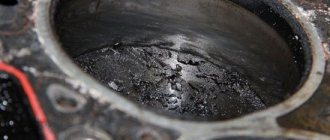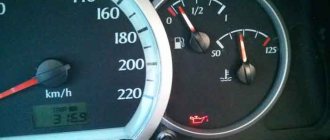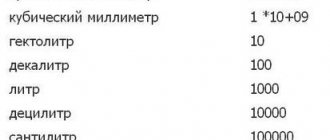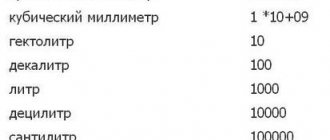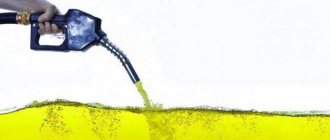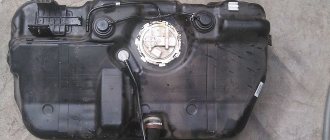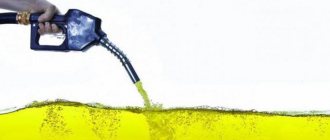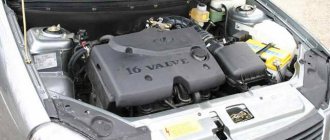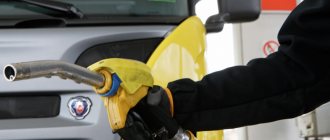Every motorist has faced this question at least once in his life. All modern cars have a special light on the dashboard, signaling to the driver that the fuel level has reached the minimum level. However, the indicator light does not mean that the car will immediately stall, because there is still a certain amount of fuel left in the tank.
How long can you drive with a Duster light bulb?
Manufacturers of Renault Duster, Renault Logan and Lada Largus are guilty of similar vague phrases: “If the lamp lights up and does not go out, you urgently need to fill the tank with fuel.” But in the same Renault, only Sandero, it is clearly stated: “From the moment the warning light first comes on, you can drive another 50 km.”
Interesting materials:
Can I wash with bleach? Can sheepskin be washed in a washing machine? Can Ikea sheepskin be washed? Can sheepskin be washed in a washing machine? Can sheepskin be washed? Can a llama coat be washed? Can polyester and viscose coats be washed in a washing machine? Is it possible to wash a coat in an automatic washing machine? Is polystyrene foam washable? Is it possible to wash feather pillows in a washing machine?
instrument panel
An indication of the need to refuel is usually accompanied by a single sound signal.
Hear this “ding” - start counting. An indication of the need to refuel is usually accompanied by a single sound signal. Hear this “ding” - start counting.
It would seem, what is there to talk about? Information about the reserve in the fuel tank should be contained in the vehicle's operating manual. Or even simpler: the trip computer warns about low fuel levels and tells you how far you can drive before refueling. Not always. Others give out only dashes instead of specific numbers, causing you to panic even more.
However, the authors of instructions often limit themselves to general words. For example, “the low fuel warning light comes on when the fuel tank is almost empty.” This is a quote from the Hyundai Solaris and Kia Rio operating manuals. It even contains an element of drama: “Running out of fuel may endanger the occupants of the vehicle.” Scary…
What does the “light bulb” mean?
Types of indicators
In cars equipped with a carburetor system, the power supply for the warning light depends on the fuel level sensor. In other words, the sensor and the lamp are connected. The operating principle is simple. When a certain level of gasoline is reached, the slider of the device closes the contacts and the light comes on. Everyone noticed that the light bulb burned intermittently at first. This is due to the splashing of gasoline in the tank. But when there is very little of it, the light bulb begins to burn constantly. Modern cars are mostly fuel-injected. The signal lamp is powered by a special sensor on the pump body. It consists of a metal flask with a thermistor inside. The principle is this: under the influence of temperature, the resistance of the thermistor changes.
Why shouldn't you let the tank empty?
The fuel level drops, the pump tries hard to pump in the remains, its body is completely exposed and begins to heat up. This has a very negative effect on it; if you like, such overheating can cause its failure.
Remember a simple truth - do not reach a dry tank! This negatively affects the fuel pump. As soon as the light comes on, you need to immediately go to the gas station and fill up with fuel.
In a good way, make it a rule not to even reach the lamp; as soon as the fuel level has dropped, but the lamp is not yet on, we go to the gas station. Thus, the pump will always be in gasoline and cool properly.
Now we are watching a short video.
I’ll finish this, yes, the article is easy, but useful for beginners. Read our AUTOBLOG.
Similar news
- What and how to glue the rear view mirror? On the windshield, under...
- Why buy old batteries?
- The battery is dead, how to start the car?
Add a comment Cancel reply
refilling gasoline
If you have to travel outside the city, keep a small can of fuel in the trunk just in case.
Check that it closes tightly. It is more convenient when it is equipped with a watering can for refilling. Like in this illustration, for example. If you have to travel outside the city, keep a small can of fuel in the trunk just in case. Check that it closes tightly. It is more convenient when it is equipped with a watering can for refilling. Like in this illustration, for example.
Meanwhile, “drying out” is bad: you can find a lot of unpleasant adventures both for yourself and for the car. For example, burn out a fuel pump that will not have enough cooling. In addition, it will begin to pick up dirt that is in the tank of any car with high mileage. A lean mixture may damage the catalytic converter. When the engine is running at high speeds and the fuel mixture stops flowing into it (for example, in a long turn), this can lead to detonation and subsequent repairs. If it happens in a mountainous area, there is a risk of not being able to overcome the climb. And in general, any forced stop far from civilization is unsafe. In winter, you can simply freeze, afraid to leave the car. Do you think it's fiction? Alas, this happens. And not only in Siberia and the Far East, but even in central Russia. By the way, read in your spare time how to survive in this case.
aerodynamics
A common feature of the champions in terms of efficiency (among them is the Volkswagen XL1, which consumes only a liter of fuel per 100 km) is impeccable streamlining.
A common feature of the champions in terms of efficiency (among them is the Volkswagen XL1, which consumes only a liter of fuel per 100 km) is impeccable streamlining.
We crawl, hobble in the darkness...
How to get to the gas station? Close the windows to improve aerodynamics and turn off the air conditioning if possible (air conditioning is a serious energy consumer). There's no point in turning off the music; she won't eat much. Leave the headlights on too - otherwise you will save on safety, which you cannot do, no matter what happens. You need to move as evenly as possible, without sudden acceleration and braking, in top gear, at a speed of about 80 km/h (not in populated areas). In 2008, our editor traveled to St. Petersburg and back on one tank, driving a 170-horsepower Volvo.
What is backup fuel
This term may not be familiar to every driver, which is why we need to make a small digression and give it an explanation. Reserve fuel is the amount of gasoline that remains in the tank after the light on the dashboard is activated. This level is different for each car; it can differ significantly in cars from different manufacturers. There is no single standard in the world, so each automaker sets the level of reserve gasoline independently.
You can find out how much gasoline remains after the light comes on in a short time. It's very simple, but you do need to have the vehicle's manual handy. Each specification specifies the technical characteristics of the fuel tank. Next to this data there is a number that corresponds to the volume of reserve fuel.
Low fuel level - what is the danger of a constantly burning light?
Fuel pump overheating
Modern injection cars use pumps of the so-called “submersible” type, which are located inside the fuel tank and operate among the fuel, generating heat, and are cooled by the same gasoline in which they are located. Accordingly, if there is little fuel left in the tank, heat removal deteriorates and the pump overheats.
However, supporters of this version most often do not take into account that even in conditions when there is little fuel in the tank, the gas pump still pumps gasoline through itself. As soon as the fuel runs out, the car’s engine will stall, and accordingly, the pump itself will stop working, involuntarily protecting itself from overheating. There are several experiments on the Internet that prove this point of view. However, all of them, naturally, were carried out under sterile conditions, and no one measured the temperature in the tank.
Lifting dirt and water from the bottom of the gas tank
Poor fuel quality poses another danger to long trips with the light on. As the total mileage of the car increases, many particles of various impurities and water accumulate at the bottom of the tank, so there is a version that when there is little fuel left in the tank, the concentration of so-called “harmful substances” in it increases, thereby creating the possibility of clogging the filter and burning the pump.
In this case, water can go further through the fuel system of the car and lead to breakdowns of both injectors and even the catalyst.
Air sucked into the fuel pump
Another theory that should discourage drivers from driving on an empty tank is the possibility of air being trapped in the pump. As a result, its lubrication is disrupted, it “rubs dry” and fails.
However, due to the anti-drip cup, created in order to smooth out fluctuations in fuel in the tank during sharp turns, as well as during acceleration and braking, the fuel pump begins to “grab” air only when the tank is completely out of fuel, and, as you know, it will not work for a long time in this mode - the engine will stall, which means the pump itself will stop functioning. However, this factor, like the previous two, cannot but create a danger for the stable operation of the car, so it is clearly not worth neglecting.
You may be interested: Which winter tires are better: Velcro or studs?
What is “reserve fuel”
Tip: When studying the instruction manual, pay attention to the “Backup fuel” column. This is the reserve that remains after the light bulb starts to burn. It is not the same for different cars, since the volume of the fuel tank is different.
Let's calculate: if the volume is 50 liters, and the fuel reserve is 10% of the total, then when the signal is turned on, 5 liters remain. Suppose, on average, a car consumes 7 liters per 100 km, which means that the estimated distance it will travel with the light on is 71 kilometers.
For example, a pre-2015 Toyota Corolla has 9 liters left in the tank after the light comes on, which is enough for 95 - 135 km. Honda CR-V will cover a distance of 100 - 125 km with 10 liters left. Ford Focus 1/16 tank is enough for 55 - 130 km. It seems that the figures are comparable, but in an extreme situation, every extra kilometer matters.
How far can you get if the light bulb has already “started its countdown”?
The minimum you can count on is 5 liters. In fact, it is more likely 7 liters, which is quite enough for 90 km if you are driving along a country road in a B-class car. Don't panic: you can make it to the nearest gas station. Of course, if you are not in the forest or desert, then the next climb will not be possible.
On country trips, a 5-liter canister with a built-in watering can will not hurt. It is inexpensive and takes up minimal space in the trunk. If you close it hermetically, this will eliminate unpleasant odors in the cabin. Do not use plastic bottles - they are dangerous: they are flammable.
If you doubt the quality of gasoline at the first gas station you come across, but the tank is almost empty, it’s better to refuel.
Fill the minimum amount until you reach a proven gas station where you can fill the tank full. Good fuel will dilute gasoline of questionable quality. BUT! Do not start right away: let it pass for a couple of seconds, then turn on the ignition. During this time, the engine will have time to “rejoice” at the good gasoline.
